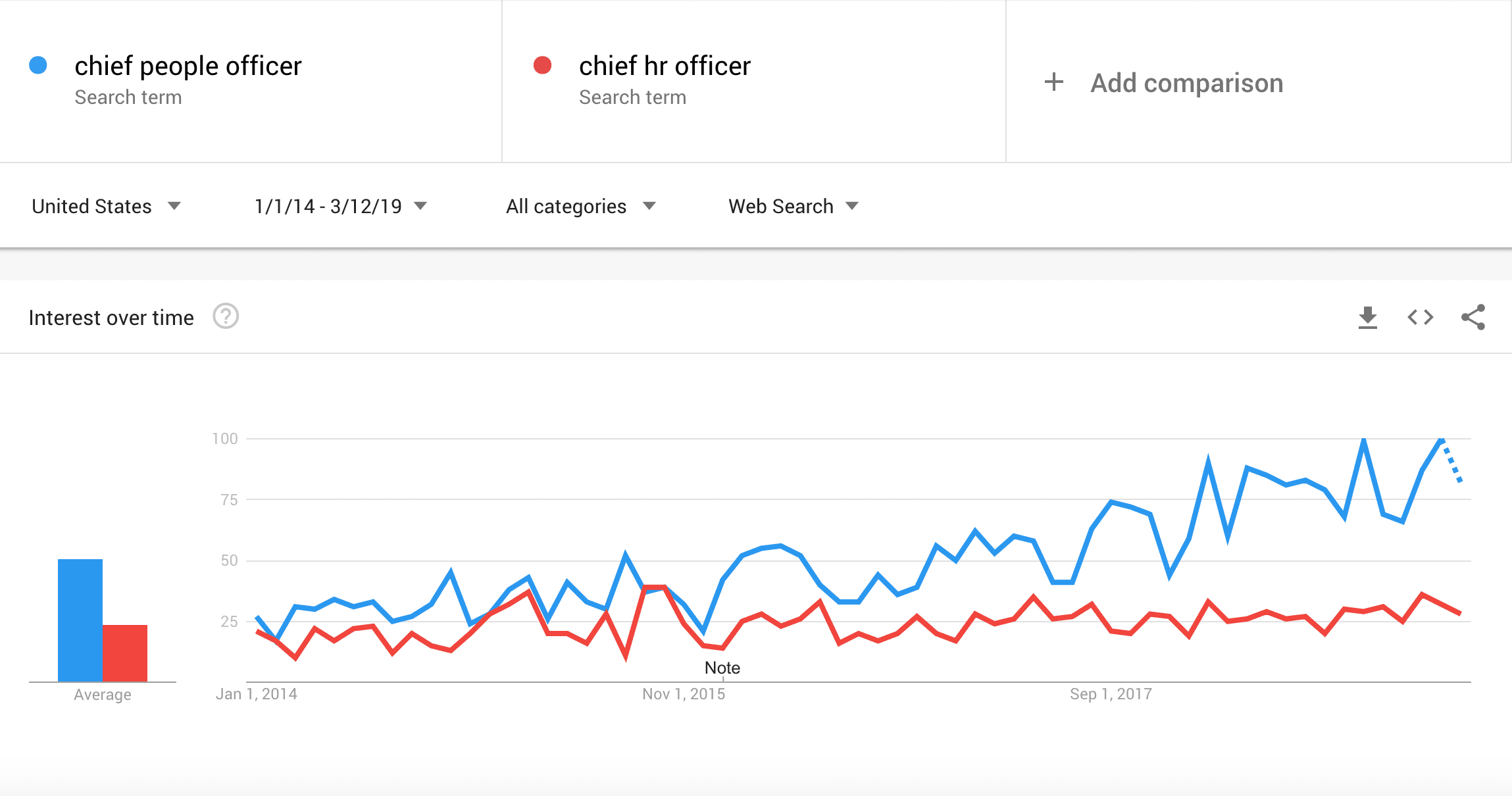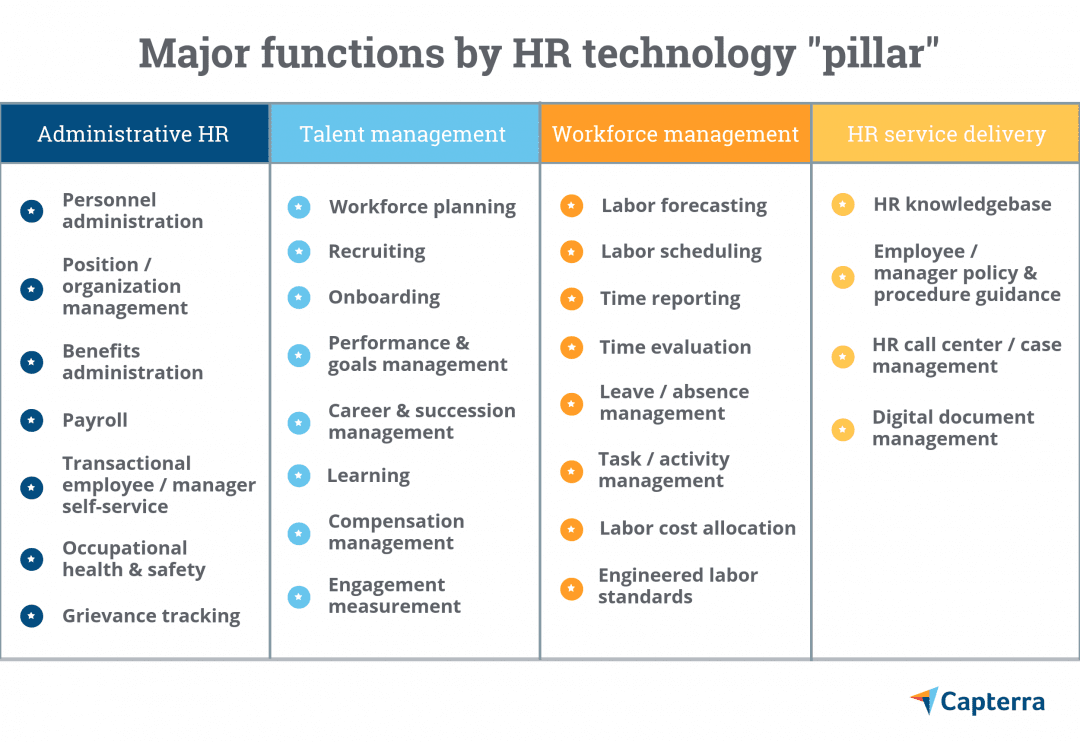For any HR department, the transition from paper files and spreadsheets to an actual, honest-to-God, core HR system or HRIS is a joyous affair. No more missing paperwork! No more late payroll runs! No more things falling through the cracks!

These systems are fantastic at providing administrative stability and efficiency, but how do they fare at helping HR departments accomplish their most important goals?
For reference, here are the top three initiatives for 800+ HR leaders in 2019, according to a Gartner survey (full research available to Gartner clients):
Building critical skills and competencies (cited by 66%)
Evaluating the current and future leadership bench (cited by 60%)
Enhancing the employee experience (cited by 51%)
Nothing about digitizing paperwork. Nothing about reporting, or time-tracking, or compliance.
As beneficial as core HR systems are, they can't help much with these strategic goals, and they can't help much with yours either.
The truth is, if your HR department wants to accomplish its lofty strategic goals this year, you're going to need to expand the functionality of your core HR system (if your vendor offers it) or invest in additional tech.
To help, we'll break down the expansive HR technology market to show you that there really is a tool out there for every major HR department goal. Let's dive in.
If you have a goal, there's HR technology to support it
Over the past half-century, the role of HR in businesses has evolved dramatically from a compliance-driven, back-office function to a people-focused, strategic function with an influential seat at the leadership table.
In the past five years alone, one only needs to look at the job title shift from “chief HR officer" to “chief people officer" to understand the mindset change that has taken place. HR is now a people-first department.

Google searches for “chief people officer" vs. “chief hr officer" since 2014 (Source)
As a result, HR departments' biggest goals today are centered less around things such as compliance and process efficiency (though, yes, those things are still important), and more around people: how to recruit them, retain them, engage them, develop them, etc.
The nearly $30 billion HR technology landscape has grown and adjusted in kind. Just take a look at the breadth of what HR technology is tackling these days, according to Gartner:

Image repurposed from "Why and How to Align Your HCM Technology Strategy to the Future of Work and the Digital Workplace" (Content available to Gartner clients)
If your goal is to automate important payroll tasks, there's payroll software. If you want to optimize labor costs, there's compensation management software. There's tech that can tackle an entire "pillar" listed above, such as workforce management software, and even massive, comprehensive HR suites that can handle every major HR function.
This list is huge, and even then, it still doesn't quite show the scale of what's going on.
Within recruiting, for example, there are software functions and even whole standalone tools for everything from sourcing job candidates to improving the candidate experience and writing killer job listings.
But if you're a brand new core HR software owner, this list also shows an unfortunate contrast.
Because, while core HR software systems can address administrative HR, HR service delivery, and even some workforce management needs such as time and attendance, they don't always have the functionality to address increasingly important goals for HR departments related to talent management.
Simply put, with more workers quitting their jobs than ever before, HR departments can't afford to ignore talent management with their tech. At the same time, HR departments may also (literally) not be able to afford massive HR software suites to tackle all their talent management needs at once.
That means you need to prioritize your tech purchases based on your HR department's biggest aspirations and most glaring weaknesses.
Need more talent management help?
Whether you decide to expand the functionality you use within your existing HR suite, or invest in new functionality with standalone solutions, HR departments should always strive to adopt technology that will help them address their talent management needs.
If you want to see Capterra's full directory of HR and talent management software products, head here.
HR departments should also try to stay on top of the latest talent management tips, best practices, and trends. We can help with that, too.
Want to read more?
Check out these additional resources from our talent management blog
It's Time for Small Businesses to Take Charge of Upskilling Their Workforce
How to Build a Company Culture to Compete Against Big Brands for Talent
Annual Performance Reviews Aren't Dead, but They Do Need New Life
Training Budget Calculator: Here's What You Should Spend on Employee Training in 2019
Employee Experience Strategy: 3 Tips to Steal From Customer Service